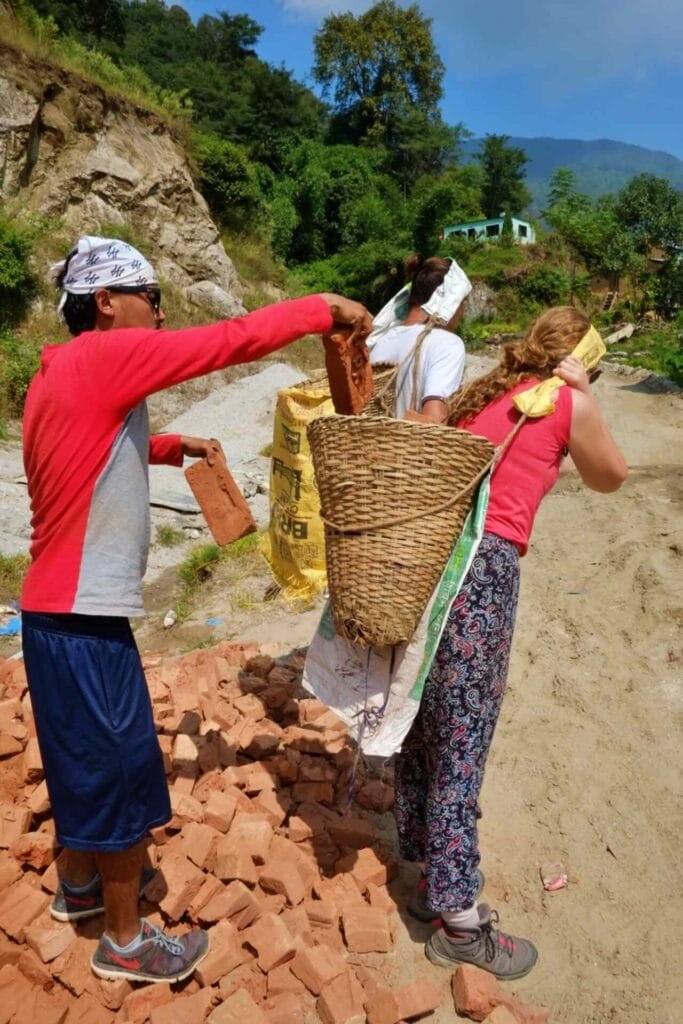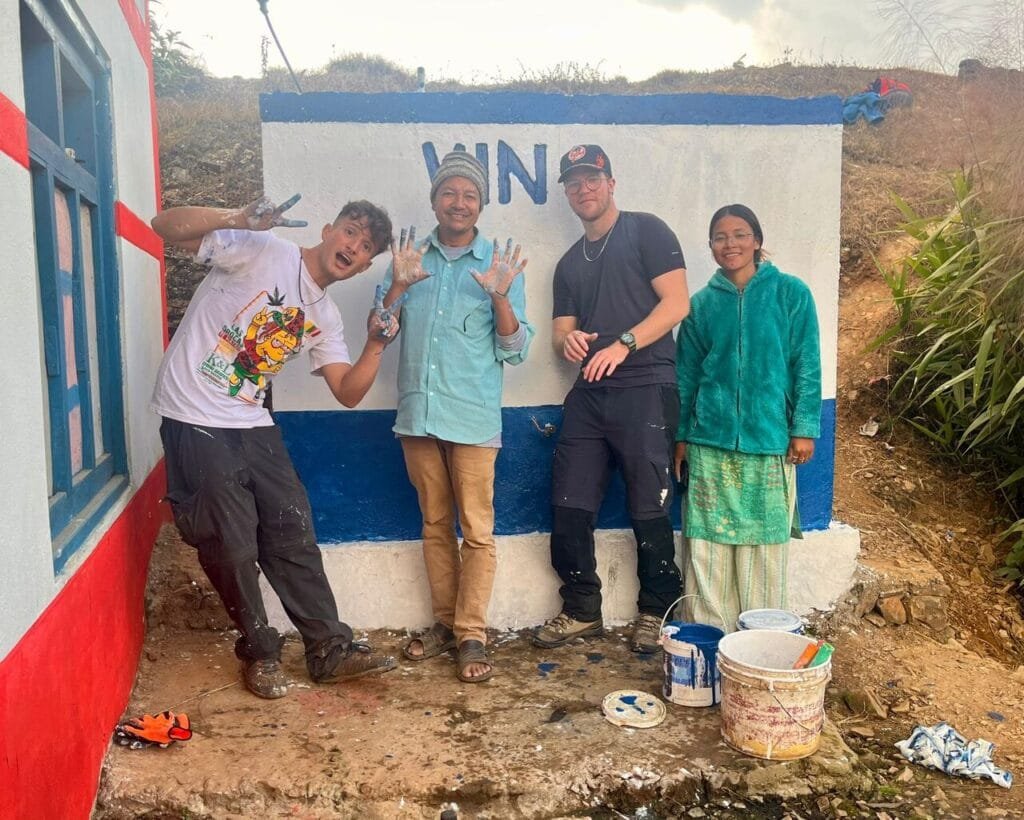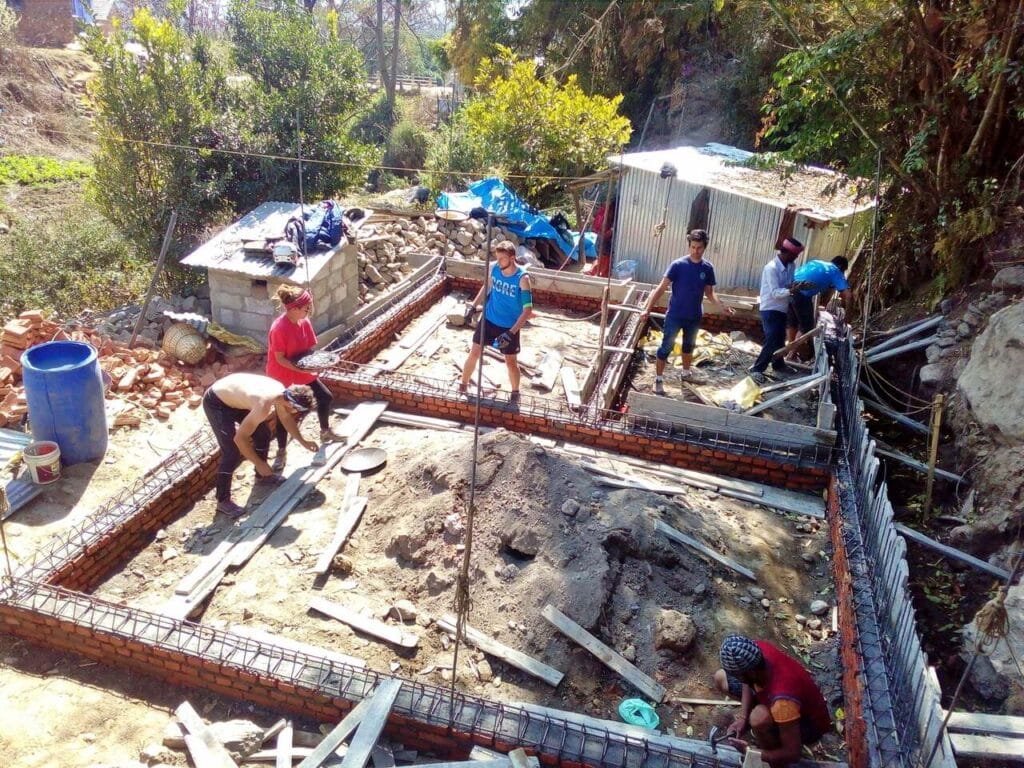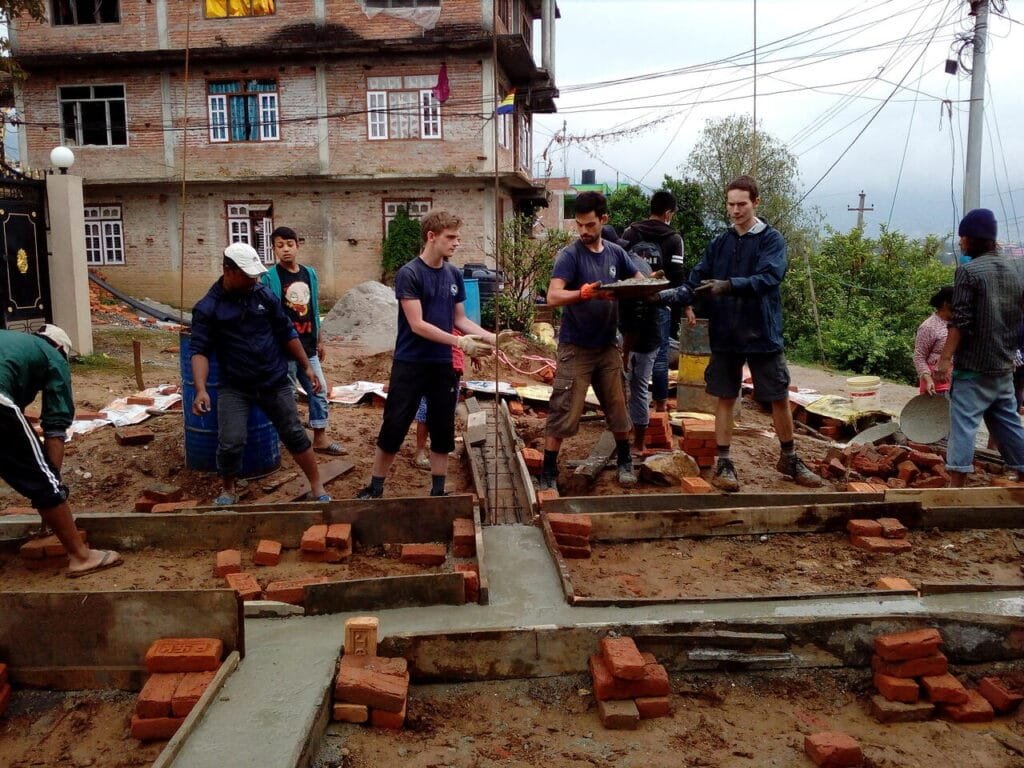Join Our Disaster Recovery Volunteer Program and Emergency Response Volunteer Opportunities to Save Lives
Overview
Project Name: Nepal Disaster Response Volunteer Initiative
Tagline: Respond, Recover, and Rebuild – Empowering Communities in Crisis
Welcome to the Nepal Disaster Response Volunteer Initiative, a dynamic project by Volunteers Initiative Nepal (ViN) designed to bolster Nepal’s capacity to manage and recover from disasters. This program provides exceptional opportunities through our Disaster Response Volunteer Program and Disaster Recovery Volunteer Program. You’ll also engage in critical Emergency Response Volunteer Opportunities that empower communities to act swiftly and effectively during crises. Whether you’re driven by a passion for humanitarian aid or aspire to join International Disaster Relief Volunteer Programs, our initiative offers a transformative experience that makes a real difference in the lives of those affected by disasters.
Project Description
Introduction
The Nepal Disaster Response Volunteer Initiative aims to build resilient communities by equipping volunteers with the skills and knowledge needed for effective disaster management. In a country frequently struck by earthquakes, floods, landslides, and other natural disasters, our program focuses on training and deploying volunteers to provide rapid response, facilitate recovery, and promote long-term resilience. Through our Disaster Response Volunteer Program, you will join a network of dedicated individuals participating in Disaster Recovery Volunteer Programs and Emergency Response Volunteer Opportunities that deliver immediate relief and sustainable solutions.
Our initiative encompasses various facets of disaster management—from crisis response and emergency services to recovery planning and public health interventions. Volunteers will gain hands-on experience through structured training modules, field exercises, and collaborative projects that adhere to international best practices and the latest frameworks in disaster risk reduction.
Background
Nepal’s vulnerability to natural disasters is well documented. Nestled in the Himalayas, Nepal’s rugged terrain, unstable geological conditions, and rapidly changing climate render it highly susceptible to earthquakes, floods, and landslides. The devastating earthquake in 2015, which claimed thousands of lives and displaced millions, serves as a grim reminder of the country’s ongoing challenges in disaster preparedness. According to the United Nations Office for Disaster Risk Reduction (UNDRR), more than 40% of Nepal’s population is at high risk of natural disasters, and many communities still struggle with inadequate emergency services and limited disaster recovery resources.
In response, Nepal has made strides in disaster recovery and preparedness, yet significant gaps remain. Local communities often lack the infrastructure, training, and resources to mitigate risks and respond effectively when disasters occur. This underscores the urgent need for comprehensive Disaster Response Volunteer Programs. By engaging international volunteers through Emergency Management Volunteer Opportunities and International Disaster Relief Volunteer Programs, our project seeks to strengthen Nepal’s disaster resilience and build a sustainable framework for crisis response.
Key Objectives
Our initiative is built upon a robust set of objectives designed to enhance Nepal’s capacity to respond to and recover from disasters:
- Strengthen Community Preparedness:
Train local communities and volunteer teams to respond effectively during emergencies through comprehensive Emergency Response Volunteer Opportunities. - Enhance Rapid Response:
Develop a network of skilled volunteers who can provide immediate relief and support during natural disasters, forming the backbone of our Disaster Response Volunteer Program. - Facilitate Long-Term Recovery:
Support Disaster Recovery Volunteer Programs that focus on rebuilding infrastructure, restoring livelihoods, and promoting sustainable community development. - Promote Public Health and Safety:
Equip volunteers with the skills to manage public health emergencies through Public Health Emergency Volunteers initiatives. - Advance Crisis Communication:
Train volunteers in effective communication strategies during disasters, aligning with Risk Communication Internship best practices to ensure timely and accurate information dissemination. - Build Capacity Through Training:
Provide rigorous disaster relief and emergency management training through Disaster Relief Training Programs and Volunteer Emergency Services modules. - Integrate International Best Practices:
Leverage expertise from International Disaster Relief Volunteer Programs to adopt global disaster management and recovery standards. - Support Local CERT Training:
Strengthen local Community Emergency Response Team (CERT) Training efforts to empower communities to be self-reliant in crises. - Foster Collaborative Humanitarian Aid:
Enhance coordination with local and international partners to deliver comprehensive humanitarian aid and effective disaster response. - Mitigate Climate Change Impacts:
Integrate climate adaptation strategies into disaster management practices, ensuring our efforts contribute to long-term environmental sustainability.
Why Volunteer for This Project?
The Need
Disasters strike without warning, leaving devastation in their wake and causing immeasurable human and economic loss. In Nepal, the frequency and severity of natural disasters have underscored the critical need for effective disaster preparedness and response. With more than 40% of the population at risk, communities face challenges ranging from insufficient early warning systems to limited emergency services. Research indicates that timely disaster response can reduce casualties by up to 50%, emphasizing the life-saving importance of well-prepared volunteers.
Our Disaster Response Volunteer Program allows you to address these challenges directly. By joining Emergency Response Volunteer Opportunities, you will help build local resilience, train communities in crisis management, and participate in life-saving relief efforts. Your contribution as an International Disaster Relief Volunteer can mean the difference between life and death in vulnerable communities.
Global Relevance
In today’s interconnected world, disaster management is a global imperative. International collaboration is key to addressing the complex challenges of natural disasters, and our program aligns with global initiatives such as the Sendai Framework for Disaster Risk Reduction and the United Nations Sustainable Development Goals (SDG 11: Sustainable Cities and Communities, SDG 13: Climate Action). Our International Disaster Relief Volunteer Programs bring experts and volunteers worldwide to share best practices and innovative solutions. This global network ensures that our Emergency Management Volunteer Opportunities and Disaster Relief Training Programs are at the forefront of modern disaster response.
Volunteering in this field enhances your professional skills and provides a unique opportunity to contribute to global humanitarian efforts. Your work will help improve disaster response, inform public policy, and build resilient communities worldwide, making you a key player in the global fight against natural and artificial disasters.
Local Voices
Local communities in Nepal have experienced the devastating impacts of disasters firsthand. A local community leader in a disaster-prone district remarked:
“In our region, every disaster leaves deep scars. The training and support provided by international volunteers give us hope and enable us to rebuild stronger. Their expertise in disaster response has saved lives and strengthened our community.” This testimonial underscores the urgent need for effective disaster preparedness and highlights the life-changing impact of programs like our Disaster Response Volunteer Program. By volunteering with us, you will directly support efforts to improve emergency response, enhance public safety, and empower communities to recover swiftly and sustainably.
Roles and Responsibilities
Core Tasks for Volunteers
As a volunteer in our Disaster Response Volunteer Program, you will engage in various tasks designed to build your expertise and make a tangible impact on community resilience. Here are twelve core tasks you will undertake:
- Facilitate Emergency Preparedness Training:
Lead training sessions for community members on first aid, evacuation procedures, and crisis response. This is a fundamental part of our Emergency Response Volunteer Opportunities. - Support Community Emergency Response Teams (CERT):
Assist in training local CERTs, equipping them with essential skills for immediate disaster response as part of CERT Training initiatives. - Coordinate Disaster Relief Training Programs:
Helped organize and deliver training workshops that covered key aspects of disaster relief, including search and rescue techniques and emergency logistics, aligning with Disaster Relief Training Programs. - Participate in Crisis Response Drills:
Participating in simulated disaster scenarios to practice emergency procedures and improve response times is a core element of our Crisis Response Volunteer Programs. - Assist in Medical Emergency Support:
Work alongside local health professionals to provide first aid, triage, and basic medical care during disasters, supporting Medical Reserve Corps Volunteer roles. - Engage in Search and Rescue Operations:
Contribute to training and field exercises focusing on search and rescue techniques, which are vital for Search and Rescue Volunteer Opportunities. - Support Volunteer Firefighter Programs:
If qualified, assist in local firefighting efforts during emergencies, an integral component of our Volunteer Firefighter Programs. - Participate in Disaster Recovery Efforts:
Collaborate on projects focusing on rebuilding critical infrastructure, restoring community services, aiding long-term recovery, and supporting Disaster Recovery Volunteer Programs. - Develop Risk Communication Strategies:
Help craft effective communication plans that disseminate vital information before, during, and after disasters, aligning with Risk Communication Internship principles. - Assist in Urban and Rural Resilience Projects:
Work on projects that strengthen urban and rural infrastructure, ensuring communities are better prepared for future disasters. This task supports Urban Resilience Internship initiatives. - Engage in Public Health Emergency Preparedness:
Assist in public health initiatives that manage disease outbreaks and ensure sanitary conditions during emergencies, contributing to Public Health Emergency Volunteers. - Document and Report on Disaster Response:
Maintain detailed records of training sessions, field activities, and community feedback to evaluate the success of disaster response efforts, aiding International Relief Volunteer Programs.
Daily Activities
A typical day in Nepal’s Disaster Response Volunteer Program is carefully structured to balance training, fieldwork, and community engagement. Below is a sample daily schedule:
- 08:30 – 09:15:
Begin your day with a nutritious breakfast and a morning briefing to review the day’s assignments, safety protocols, and any weather or risk updates. - 09:15 – 10:00:
Prepare training materials, review emergency response plans, and organize equipment for field exercises and simulations. - 10:00 – 13:00:
Participate in hands-on training sessions on emergency response, including first aid, evacuation drills, and crisis communication workshops. This period is crucial for building skills essential to Emergency Response Volunteer Opportunities. - 13:00 – 14:00:
Enjoy a lunch break and network with fellow volunteers, local responders, and community leaders to share experiences and discuss strategies for effective disaster management. - 14:00 – 16:00:
Engage in community outreach activities and conduct CERT training sessions. Assist local teams in practical exercises, such as search and rescue drills and medical support exercises, forming the backbone of our Volunteer Emergency Services and Disaster Relief Training Programs. - 16:00 – 17:00:
Document the day’s activities, update progress logs, and participate in a debriefing session to discuss successes, challenges, and areas for improvement in our disaster response efforts. - 17:00 – 18:00:
Work on special projects such as risk communication planning or developing emergency resource kits, contributing to Risk Communication Internship and Disaster Recovery Volunteer Abroad initiatives. - 18:00 Onwards:
Participate in cultural immersion activities, such as local community events or language classes, to deepen your understanding of Nepalese culture and strengthen relationships with regional partners. This time supports our International Disaster Relief Volunteer Programs by fostering community engagement and mutual understanding.
Special Projects
Our Disaster Response Volunteer Program in Nepal features several special initiatives designed to extend your learning and maximize your impact:
- Emergency Simulation Drills:
Organize and conduct large-scale simulation exercises that test the effectiveness of emergency response plans, providing practical experience in Emergency Management Volunteer Opportunities. - Search and Rescue Training Camps:
Lead specialized training sessions in search and rescue operations, equipping volunteers with critical skills required for Search and Rescue Volunteer Opportunities and supporting local rescue teams. - Medical Emergency Response Projects:
Collaborate with local health professionals to provide emergency medical care during disasters, supporting Medical Reserve Corps Volunteer initiatives and enhancing overall community health response. - Volunteer Firefighter Training:
Assist in training local volunteers in firefighting techniques and emergency management, contributing to Volunteer Firefighter Programs that enhance local safety. - Public Health Emergency Workshops:
Facilitate workshops focused on public health emergencies, teaching communities how to manage disease outbreaks and maintain sanitation during crises, which supports Public Health Emergency Volunteers. - Disaster Recovery Projects:
Engage in long-term recovery efforts by helping rebuild critical infrastructure, restore services, and support economic recovery in affected areas, aligning with Disaster Recovery Volunteer Programs. - Risk Communication Campaigns:
Develop and implement effective communication strategies to educate communities about disaster preparedness, which is crucial for the Risk Communication Internship and Emergency Planning Internship efforts. - Urban Resilience and Infrastructure Projects:
Participate in projects reinforcing urban infrastructure to withstand future disasters, supporting Resilient Infrastructure Internship initiatives. - International Relief Collaborations:
Work with global humanitarian organizations to exchange best practices, share resources, and coordinate relief efforts, contributing to International Relief Volunteer Programs. - Climate Adaptation Initiatives:
Engage in projects promoting climate resilience by integrating sustainable practices and early warning systems, essential for Climate Resilience Internship and Disaster Risk Reduction Volunteer projects.
Skills and Requirements
Required Skills
To excel in our Disaster Response Volunteer Program in Nepal, you should possess:
- A strong passion for humanitarian aid, disaster management, and environmental conservation.
- Excellent communication, leadership, and teamwork skills.
- A background or keen interest in emergency management, first aid, crisis response, or related fields.
- Physical stamina and the ability to work in high-pressure, challenging environments.
- Proficiency in basic first aid and emergency response techniques; additional training will be provided.
- Strong organizational skills and attention to detail.
- Cultural sensitivity and the ability to work effectively with diverse communities.
- A proactive, solution-oriented mindset to handle unpredictable crisis scenarios.
- A commitment to public service and the drive to build resilient communities.
Eligibility
Our program is open to individuals aged 18 and above, including students, professionals, and experienced volunteers who are passionate about disaster management and humanitarian aid. Whether you have previous experience in International Disaster Relief Volunteer Programs or are new to crisis response, your dedication to improving disaster preparedness is the most essential qualification.
Preferred Skills
While not mandatory, the following skills will enhance your experience:
- Prior experience in emergency management, search and rescue, or volunteer firefighting.
- Familiarity with crisis communication strategies and disaster risk reduction methods.
- Experience working with Community Emergency Response Teams (CERT) or in humanitarian aid organizations.
- Proficiency in digital tools for data analysis and crisis communication.
- Multilingual abilities to communicate effectively with local communities.
- A professional portfolio or recommendations that highlight your contributions to disaster preparedness.
- Experience with Crisis Response Volunteer Programs or Humanitarian Aid Volunteer Opportunities is highly advantageous.
Cultural Experience
Immersion in Local and Global Cultures
Our Disaster Response Volunteer Program in Nepal offers an unparalleled cultural immersion experience. As you work alongside local emergency responders, healthcare professionals, and community leaders, you will gain valuable insights into Nepalese communities’ unique challenges and resilience. Engaging in local traditions, festivals, and daily life will enrich your volunteer experience and provide context to the challenges of disaster management. This cultural immersion helps build strong community relationships and deepens your understanding of how local practices can be integrated with modern emergency management strategies.
Language and Communication
Effective communication is essential during disaster response. We offer optional language workshops to help you learn basic Nepali phrases and cultural nuances, ensuring you can connect effectively with local communities and emergency teams. Enhanced language skills improve your ability to train, coordinate, and foster trust and collaboration, which are vital for the success of International Disaster Relief Volunteer Programs and Volunteer Emergency Services.
Logistics and Support
Accommodation
We provide safe, comfortable, and culturally immersive accommodations for on-site volunteers. Options include local guesthouses, shared volunteer housing, or homestays that offer an authentic Nepalese experience. These arrangements support your daily activities, foster community among volunteers, and ensure you feel secure and well-supported throughout your internship.
Meals
Nutritious meals are provided three times a day, featuring traditional Nepalese cuisine with options to accommodate vegetarian and other dietary preferences. Our meal plans are designed to keep you energized and focused during long days of training, fieldwork, and community engagement activities.
Transportation
Reliable transportation services are arranged for all on-site activities, including airport pickups and daily shuttles to training centers, community sites, and disaster response locations. Our organized logistics allow you to focus entirely on your responsibilities, ensuring a seamless experience throughout your Disaster Response Volunteer Program placement.
On-Site and Virtual Support
A dedicated team of coordinators, emergency management experts, and local staff is available around the clock to support you during your volunteer assignment. They guide training sessions, help troubleshoot logistical challenges, and offer continuous feedback during on-site and virtual workshops. This comprehensive support system is essential for your success in our Emergency Management Volunteer Opportunities and International Disaster Relief Volunteer Programs.
Health and Safety
Your health and safety are our highest priorities. We conduct thorough health and safety briefings, provide necessary vaccinations, and ensure you have access to comprehensive travel insurance and emergency protocols. These measures safeguard you throughout your volunteer experience, ensuring a secure and supportive environment for you and the communities you serve.
Program Fees and Inclusions
Our transparent fee structure covers all essential components of your Disaster Response Volunteer Program experience in Nepal:
- Digital Tools and Educational Materials:
Crisis management guides, digital training modules, curriculum materials, and emergency communication resources are available. - Virtual and On-Site Training Sessions:
Participation in live webinars, interactive workshops, and hands-on training sessions as part of our Disaster Relief Training Programs and Volunteer Emergency Services modules. - Accommodation and Meals:
Safe, culturally immersive lodging and nutritious meals are provided throughout your volunteer assignment. - Transportation:
Organized transfers between the airport, accommodations, and project sites. - On-Site Support and Mentorship:
Continuous guidance from experienced disaster response professionals, local coordinators, and emergency management experts. - Special Projects and Initiatives:
Inclusion in long-term projects such as search and rescue drills, public health emergency initiatives, and community crisis response training. - Wellness Programs:
Access to virtual wellness sessions and support initiatives designed to maintain a healthy work-life balance.
For detailed fee information, please visit our Program Fees & Inclusions page. Your investment in this program accelerates your professional development and supports broader efforts to build resilient, disaster-ready communities in Nepal.
Impact and Outcomes
Volunteer Impact
Participants in our Disaster Response Volunteer Program consistently report transformative experiences that significantly enhance their skills and career prospects:
- Enhanced Crisis Management Skills:
Interns gain practical expertise in emergency response, first aid, search and rescue, and risk communication, which are critical for success in Emergency Management Volunteer Opportunities. - Robust Professional Portfolio:
Build a diverse portfolio highlighting your contributions to disaster relief, community training, and crisis management initiatives, strengthening your credentials for future roles in humanitarian aid. - Global Perspective:
Develop a comprehensive understanding of international disaster response strategies and best practices through hands-on experience with International Disaster Relief Volunteer Programs. - Networking Opportunities:
Through our humanitarian aid volunteer opportunities and crisis response volunteer programs, you can connect with emergency management professionals, local responders, and international experts. - Increased Leadership and Communication Skills:
Enhance your ability to lead emergency teams and effectively communicate during crises, which is essential for roles in Volunteer Emergency Services. - Career Advancement:
Many alumni describe the program as “life-changing” and “career-defining,” opening doors to advanced opportunities in disaster management, public health, and humanitarian response. - Personal Fulfillment:
Experience the deep satisfaction of making a tangible difference by saving lives, rebuilding communities, and promoting resilience in vulnerable populations.
Community Impact
Our Disaster Response Volunteer Program has a significant and lasting impact on local communities in Nepal:
- Improved Emergency Response:
Through comprehensive training and support, local communities are better prepared to respond quickly and effectively during disasters, reducing casualties and speeding up recovery. - Strengthened Community Resilience:
Establishing trained CERT teams and robust emergency protocols empowers communities to manage crises independently, ensuring long-term resilience. - Enhanced Public Health:
Effective disaster response minimizes the spread of diseases and ensures timely access to emergency medical care, improving overall community health outcomes. - Economic Benefits:
Rapid and effective disaster response reduces economic losses, protects livelihoods, and fosters sustainable community development. - Sustainable Infrastructure:
Implementing risk reduction strategies leads to reinforcing critical infrastructure and mitigating damage in future disasters. - Social Cohesion:
Collaborative disaster response efforts foster a sense of community unity and empowerment, encouraging local participation in resilience-building initiatives. - Global Inspiration:
The success of our program serves as a model for International Relief Volunteer Programs, inspiring similar initiatives around the world.
Success Stories and Testimonials
Our alums and local community partners have shared inspiring stories that illustrate the transformative impact of our Disaster Response Volunteer Program in Nepal:
“Volunteering in Nepal’s disaster response program was a life-changing experience. I trained local teams in first aid and emergency response, and witnessing the community’s resilience was truly inspiring. It reaffirmed my commitment to humanitarian aid.”
— Alex, Former Volunteer
“The training and field exercises in crisis management equipped me with skills I never thought I’d learn. Our efforts during simulation drills and real emergencies showed me how effective disaster preparedness can be in saving lives.”
— Jamie, Alumni
“I was impressed by the dedication of local responders and international volunteers. Together, we built a stronger community capable of withstanding future disasters. The experience was both challenging and enriching.”
— Casey, Former Volunteer
“Working in Nepal’s disaster response program gave me a new perspective on the importance of emergency planning and public health. The mentorship and training I received have been invaluable for my career in emergency management.”
— Taylor, Alumni
“This program improved my crisis management skills and taught me the power of community solidarity. The practical experience and the relationships I built will stay with me forever.”
— Morgan, Former Volunteer
These testimonials highlight our Disaster Response Volunteer Program’s profound impact on volunteers and the communities they serve. They prove that effective disaster response can save lives and foster sustainable development.
Application Process
Are you ready to join our mission and empower communities in Nepal through effective disaster response? Follow these steps to become a part of our Disaster Response Volunteer Program:
- Complete the Online Application:
Visit Apply Now and fill out the application form to express your interest. - Submit Your Resume:
Attach your CV and two professional or academic references highlighting your experience and passion for disaster management, humanitarian aid, or emergency response. - Await Confirmation:
Monitor your email for a confirmation message and further instructions regarding your application. - Pay the Booking Fee:
Secure your spot with a €150 program booking fee. - Receive the Pre-Departure Pack:
Access comprehensive guidelines, training materials, and virtual onboarding instructions to prepare for your volunteer assignment. - Final Payment:
Process the remaining program fee via secure online payment to confirm enrollment.
Frequently Asked Questions (FAQs)
1. What are Disaster Response Volunteer Programs?
These programs train volunteers in emergency response, disaster relief, and crisis management, enabling them to provide immediate and effective aid during disasters.
2. Who is eligible to join Nepal’s Disaster Response Volunteer Program?
Our program is open to individuals aged 18 and above, including students, professionals, and experienced volunteers with a passion for humanitarian aid and emergency management.
3. What types of activities are involved in Emergency Response Volunteer Opportunities?
Activities include first aid training, search and rescue exercises, crisis communication, risk assessments, and community emergency response team (CERT) training.
4. How long do volunteer placements typically last?
The duration of placements varies from two weeks to several months, depending on the project’s needs and volunteer availability.
5. What kind of training is provided during Disaster Relief Training Programs?
Interns receive comprehensive training in first aid, crisis management, emergency planning, search and rescue techniques, and public health emergency response.
6. How do International Disaster Relief Volunteer Programs operate?
These programs unite volunteers worldwide to share expertise and resources, working collaboratively to improve disaster response and recovery efforts in vulnerable communities.
7. How can I apply for the Disaster Response Volunteer Program?
Visit Apply Now, complete the online application form, submit your resume and references, and follow the instructions for a smooth application process.
Join Us Today to Make a Difference!
Suppose a passion for helping others drives you and possesses the skills to respond to emergencies. In that case, our Disaster Response Volunteer Program in Nepal is your opportunity to have a significant impact. Join our team of dedicated volunteers and be part of the solution that empowers communities, saves lives, and fosters disaster resilience.
Apply Now or contact us at support@vin.org.np. Share this opportunity with friends, colleagues, and anyone who believes in the power of humanitarian aid to change lives.
Gallery




